| [1] 杨伟光,翁永前,欧志峰,等.椎弓根钉单节段固定术治疗胸腰椎不稳定骨折[J].当代医学,2010,16(24):89-90. [2] 史金辉,杨慧林,王根林,等.椎弓根内固定治疗合并脊髓损伤的胸腰椎骨折[J].国矫形外科杂志,2007,15(20): 1531-1532. [3] 刘洪涛,镇万新,朱杰诚,等.经皮椎弓根内固定术在胸腰椎骨折中的应用[J].中国矫形外科杂志,2005,13(16): 1227-1229. [4] 任东风,史亚民,侯树勋,等.后路短节段椎弓根内固定治疗无神经损伤胸腰段爆裂骨折[J].中国骨与关节损伤杂志, 2005,20(2):86-87. [5] Yoon WW,Sedra F,Shah S,et al. Improvement of pulmonary function in children with early -onset scoliosis using magnetic growth rods. Spine. 2014; 39(15):1196-1202. [6] 梁博伟,殷国前,赵劲民,等.显微镜下精准减压术治疗退变性腰椎管狭窄症[J].中国矫形外科杂志,2012,20(5): 397-401. [7] Lonner BS,Auerbach JD,Estreicher MB,et al. Pulmonary function changes after various anterior approaches in the treatment of adolescent idiopathic scoliosis. J Spinal Disord Tech. 2009;22(8):551-558. [8] 张雪松,王岩,张永刚,等.全节段椎弓根螺钉与椎弓根钉、钩系统矫治单胸弯特发性脊柱侧凸的疗效比较[J]. 中国脊柱脊髓杂志,2008,18(3):182-186. [9] Oshima M,Matsuzaki H,Tokuhashi Y, et al. Evaluation of biomechanical and histological features of vertebrae following vertebroplasty using hydroxyapatite blocks. Orthopedics.2010;33(2):89-93. [10] 陈庆贺,周跃,高吉昌,等. 3 种摄片方法预测青少年特发性脊柱侧凸矫形结果的对比研究[J].中国矫形外科杂志, 2007,15:1815-1817. [11] Oner FC,Ramos LM,Simmermacher RK, et al. Classification of thoracic and lumbar spine fractures: problems of reproducibility. A study of 53 patients using CT and MRI. Eur Spine J. 2002;11(3):235-245. [12] Garfin SR,Buckley RA,Ledlie J,et al. Balloon kyphoplasty for symptomatic vertebral body compression fractures results in rapid,significant, and sustained improvements in back pain, function, and quality of life for elderly patients. Spine. 2006;31(19): 2213-2220. [13] 池永龙,徐华梓,林焱,等.微创经皮椎弓根钉内固定治疗胸腰椎骨折的初步探讨[J].中华外科杂志,2004,42(21): 1307-1311. [14] Kim DJ,Kim TW,Park KH,et al. The proper volume and distribution of cement augmentation on percutaneous vertebroplasty. J Korean Neurosurg Soc. 2010;48(2): 125-128. [15] Venmans A,Klazen CA,van Rooij WJ,et al. Postprocedural CT for perivertebral cement leakage in percutaneous vertebroplasty is not necessary--results from VERTOS II. Neuroradiology. 2011;53(1):19-22. [16] 刘新宇,原所茂,田永昊,等.腰椎棘突劈开椎管减压术治疗退变性腰椎管狭窄症[J].中国脊柱脊髓杂志,2011,21(8): 650-653. [17] Li Q,Liu Y,Chu Z,et al. Treatment of thoracolumbar fractures with transpedicular intervertebral bone graft and pedicle screws fixation in injured vertebrae. Zhongguo Xiu Fu Chong Jian Wai Ke Za Zhi. 2011;25 (8):956-959. [18] 夏天,王雷,董双海,等.经椎间孔扩大减压结合改良经椎间孔腰椎椎体间融合术治疗退变性腰椎管狭窄症(22例3年以上随访) [J].中国矫形外科杂志,2012,20(24): 2242-2245. [19] Jindal N,Sankhala SS,Bachhal V. The role of fusion in the management of burst fractures of the thoracolumbar spine treated by short segment pedicle screw fixation: a prospective randomised trial. J Bone Joint Surg Br. 2012;94(8):1101-1106. [20] 向志军,钟生才,林伟,等.多节段开窗法在老年性退变性腰椎管狭窄症中的应用[J].中国矫形外科杂志,2012,20(9): 852-854. [21] 樊友亮,丁亮华,何双华,等.腰椎后部结构生物力学研究进展及其临床意义[J].中国医师进修杂志,2011,34(11): 75-77. [22] Zeng ZY,Zhang JQ,Jin CY,et al. Surgical treatment of thoracolumbar fractures using pedicle screws fixation at the level of the fracture: results for following up more than 2 years.Zhongguo Gu Shang. 2012,25(2): 128-132. [23] 晏礼,宋文慧,王春强,等.胸腰椎骨折分类及治疗研究新进展[J].中国矫形外科杂志,2013,21(12):1202-1205. [24] 牛存良.经皮椎体成形术联合中药治疗老年性胸腰椎压缩性骨折的疗效[J].中国老年学杂志,2012,32(22): 5065-5066. [25] 何丽英,刘恩君.焦虑自评量表在退变性腰椎管狭窄症患者术前护理中的应用研究[J].护士进修杂志,2011,26(21): 1933-1935. [26] 向俊宜,孟庆奇,赵文韬,等.后路椎弓根钉内固定结合单纯椎间植骨融合与椎间融合器治疗腰椎不稳的疗效比较[J]. 广东医学,2012,33(22): 3423-3425. [27] Li Q, Liu Y, Chu Z, et al. Treatment of thoracolumbar fractures with transpedicular intervertebral bone graft and pedicle screws fixation in injured vertebrae. Zhongguo Xiu Fu Chong Jian Wai Ke Za Zhi. 2011; 25(8):956-959. [28] 李智斐,钟远鸣,周劲衍,等.选择性神经根造影加封闭术对退行性腰椎管狭窄症患者的诊断意义和临床价值[J].广东医学,2012,33(2): 240-242. [29] 王许可,王洪伟,刘兰涛,等.无神经损伤的胸腰椎骨折的治疗进展[J].中国脊柱脊髓杂志,2012,22(11): 1035-1039. [30] 厉晓龙,刘锦波.单侧椎弓根螺钉内固定椎间融合术治疗腰椎间盘突出症的研究进展[J].中国矫形外科杂志, 2011, 19(19):1623-1625. [31] 王治栋,朱若夫,杨惠林,等.前路减压Zero-p椎间融合器与传统钛板联合cage融合内固定治疗脊髓型颈椎病的疗效比较[J].中国脊柱脊髓杂志,2013,23(5): 440-444. [32] 陈晓明,马华松,王蒙,等. 脊柱植入物内固定治疗腰椎间盘突出症的复发因素[J].中国组织工程研究, 2013, 17(30):5539-5544. [33] 李振宙,吴闻文,宋科冉,等.微创TLIF术中不同椎弓根螺钉置入技术的对比研究[J].中国矫形外科杂志, 2012,20 (21): 1926-1930. [34] 丁立祥,陈迎春,张亘瑷,等.后路动态稳定系统内固定治疗腰椎间盘突出症的稳定性评价[J].中国组织工程研究, 2013,17(22):4123-4129. [35] 刘涛,李长青,周跃,等.微创单侧椎弓根螺钉固定、椎体间融合治疗腰椎疾患所致腰痛的临床观察[J].中国脊柱脊髓杂志,2010,20(3):224-227. [36] 牛翔科,肖应权,孙凤,等. CT引导下微创治疗腰椎间盘突出症疗效观察[J].中华实用诊断与治疗杂志,2014,28(4): 348-349. [37] Lehnert T,Naguib NN,Wutzler S,et al. Analysis of disk volume before and after CT guided intradiscal and periganglionic ozone-oxygen injection for the treatment of lumbar disk herniation. J Vase Interv Radiol. 2012; 23(11):1430-1436. [38] Kermani HR, Keykhosravi E, Mirkazemi M, et al. The relationship between morphology of lumbar disc herniation and MRI changes in adjacent vertebral bodies. Arch Bone Jt Surg. 2013;1(2):82-85. [39] Lee SH, Daffner SD, Wang JC. Does lumbar disk degeneration increase segmental mobility in vivo? Segmental motion analysis of the whole lumbar spine using kinetic MRI.J Spinal Disord Tech. 2014;27(2): 111-116. [40] Wang M,Zhou Y,Wang J,et al. A 10-year follow-up study onlongterm clinical outcomes of lumbar microendoscopic discectomy. J Neurol Surg A Cent Eur Neurosurg. 2012;73(4):195-198. [41] 李贤坤,谭志宏,洪海滨,等. 单侧与双侧椎弓根螺钉固定、后路椎间融合术治疗腰椎间盘突出伴腰椎不稳症的临床研究[J].中国医药导报,2013,10(12):41-43. [42] Xu G, Fu X, Du C, et al. Biomechanical comparison of mono-segment transpedicular fixation with short-segment fixation for treatment of thoracolumbar fractures: a finite element analysis. Proc Inst Mech Eng H. 2014;228(10):1005-1013. [43] Li C, Zhou Y, Wang H, et al. Treatment of unstable thoracolumbar fractures through short segment pedicle screw fixation techniques using pedicle fixation at the level of the fracture: a finite element analysis. PLoS One. 2014;9(6):e99156. [44] Xu G, Fu X, Du C, et al. Biomechanical effects of vertebroplasty on thoracolumbar burst fracture with transpedicular fixation: a finite element model analysis. Orthop Traumatol Surg Res. 2014;100(4): 379-383. [45] Zeng ZL, Zhu R, Li SZ, et al. Formative mechanism of intracanal fracture fragments in thoracolumbar burst fractures: a finiteelement study. Chin Med J (Engl). 2013;126(15):2852-2858. [46] Li QL, Li XZ, Liu Y, et al. Treatment of thoracolumbar fracture with pedicle screws at injury level: a biomechanical study based on three-dimensional finite element analysis. Eur J Orthop Surg Traumatol. 2013; 23(7):775-780. |
.jpg)
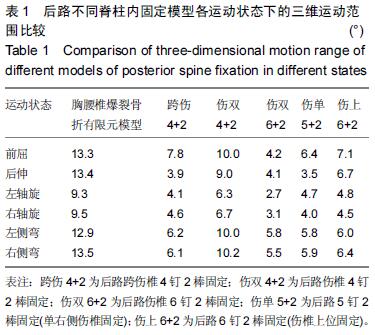
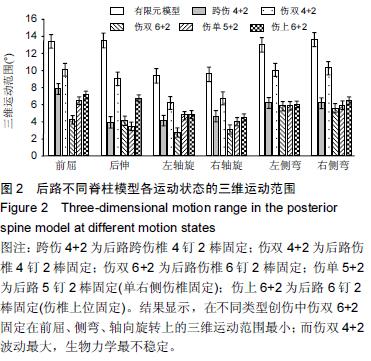
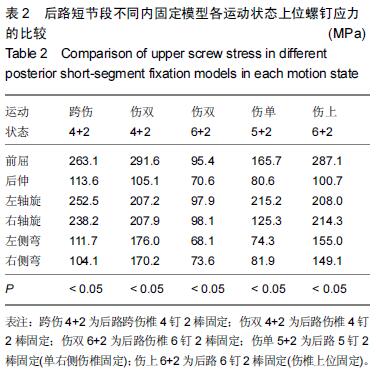
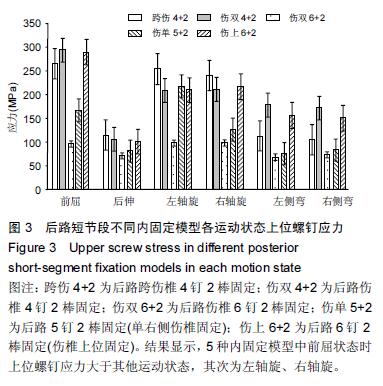
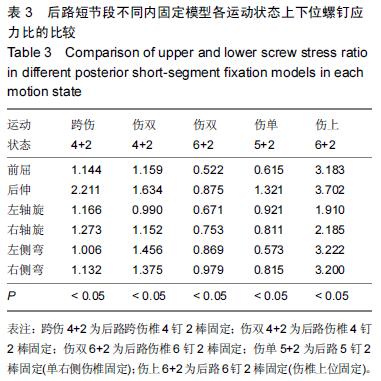
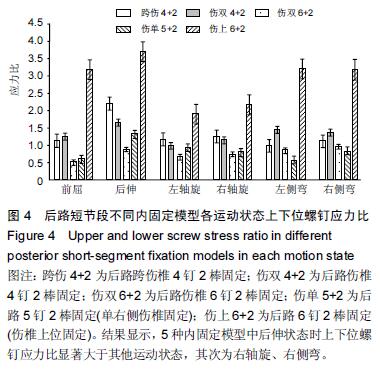
.jpg)
.jpg)